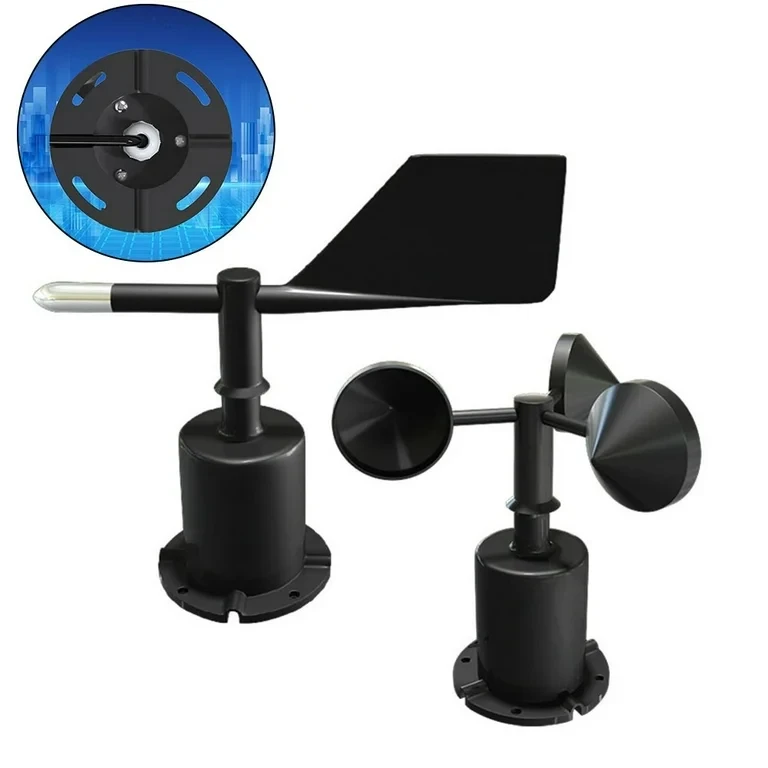Anemometer Application Trend
Wind measurement is important for weather monitoring and many scientific uses. The cup anemometer is one of the oldest and most popular tools for measuring wind speed. Over the years, cup anemometers have improved a lot. They now provide more accurate and reliable measurements.
As we look ahead, there are many exciting trends in cup anemometer technology. This article will explore these trends and discuss the new advancements that will change how we measure wind speed.
Advancement in Sensor Technology
Sensor technology is important for cup anemometers. New advancements will make them even better. A key trend for the future is creating high-precision sensors.
These sensors will give us better accuracy and sensitivity. They will help us measure wind speed more precisely. Very sensitive sensors can notice even small changes in wind speed. This helps us gather and analyze data more accurately.
Future cup anemometers will be more accurate. They will likely use advanced multi-sensor arrays. These arrays will measure wind speed. They will also provide data on wind direction, turbulence, and other key weather factors.
Cup anemometers have several sensors in one device. This makes them more versatile. They provide a full view of airflow patterns.
Integration with IoT and Wireless Communication
The Internet of Things (IoT) has changed many industries, including cup anemometers. In the future, cup anemometers will connect to IoT platforms. This will make it easier to share data and monitor them from afar.
With IoT, users can see wind speed data in real time. This helps them make quick and informed decisions.
Wireless communication will be very important for improving cup anemometer technology. Traditional cup anemometers needed physical cables to send data. This limited where they could be installed.
Future cup anemometers will use wireless communication like Wi-Fi or Bluetooth. This will remove the need for heavy cables. The wireless feature will make installation easier. It will also allow more options for where to measure.
Data Analytics and Artificial Intelligence
As cup anemometers get better, they will create a lot of data. Using data analysis and artificial intelligence (AI) will be key. AI algorithms will help these anemometers study wind patterns and provide useful insights. These smart devices will find trends, spot problems, and predict future wind patterns based on past data.
With data analytics, cup anemometers can change their measurement settings in real-time. They can detect sudden gusts of wind or shifts in direction.
When this happens, it can change how sensitive it is. This helps get accurate measurements in different wind conditions. This ability will improve the reliability of cup anemometer measurements. It will also make them better for various environments.
Anemometer miniaturization and Durability
In recent years, miniaturization has changed many technologies. Cup anemometers are part of this trend. In the future, we will see even smaller and more compact designs.
Miniaturization makes cup anemometers easier to carry and lowers their power use. Smaller cup anemometers are helpful in tight spaces and where power is limited. This includes drones, remote weather stations, and research buoys.
Cup anemometer makers are working to make their products last longer. They plan to use stronger materials in future models. These materials can withstand bad weather, extreme temperatures, and harsh conditions.
This durability helps cup anemometers last longer. It also cuts down on the need for frequent maintenance. This reliability is key for long-term use.
Integration with Renewable Energy Systems
Renewable energy systems, like wind farms, need accurate wind speed measurements to work well. In the future, engineers will easily add cup anemometers to these systems. These anemometers will have special features and communication methods made for wind farms.
Renewable energy systems use cup anemometers to give real-time wind speed data. They also help wind turbines perform better.
These devices help control the turbines better. This allows operators to run them at their best efficiency.
Cup anemometers help with predictive maintenance. They can spot changes in wind patterns that might impact the turbines’ lifespan and performance.
Conclusion
The future of cup anemometer technology looks bright. It has great potential to improve how we measure wind speed. New sensors and better IoT will make cup anemometers more accurate. Wireless communication and improved data analysis will also help.
AI advancements will improve accuracy. They will also be more flexible for various uses. Miniaturization and better durability will help with this.
As cup anemometer technology grows, its effects will reach beyond weather and meteorology. Using cup anemometers in renewable energy systems will boost turbine performance. This will also help create a sustainable future.
In conclusion, future trends in cup anemometer technology will change the field. They will offer more accurate data and easier installation. These advancements will allow for adaptive measurements and smooth integration.
Cup anemometers are useful tools. They help us learn about wind patterns. People use them for renewable energy, weather monitoring, and research. These devices will continue to be important for using wind power well.
OEM sensors have clear benefits. People in the market feel strongly about them. This is especially true with the rise of environmental monitoring systems around the world.
Hunan Coda Electronic Tech Co., Ltd is a leader in global sensor solutions. We will create a special range of Coda Sensors and related brands. Our goal is to surpass our competitors in quality, innovation, and value. We want to be the top choice for sensor solutions that customers trust around the world.
Hunan Coda Electronic Tech Co., Ltd. wants its workers to learn new skills. They should focus on developing unique human skills. These skills include strategic thinking, abstract thinking, complex communication, creativity, and leadership. High-tech machines cannot copy these abilities.
